Filter by

Drought stress in Maize (Zea mays L.) : effects, resistance mechanisms, globa…
This book focuses on early germination, one of maize germplasm most important strategies for adapting to drought-induced stress. Some genotypes have the ability to adapt by either reducing water losses or by increasing water uptake. Drought tolerance is also an adaptive strategy that enables crop plants to maintain their normal physiological processes and deliver higher economical yield despite…
- Edition
- -
- ISBN/ISSN
- 9783319254425
- Collation
- -
- Series Title
- -
- Call Number
- 580
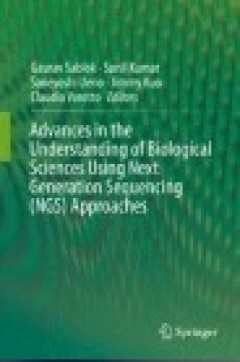
Advances in the Understanding of Biological Sciences Using Next Generation Se…
Provides a global view of the recent advances in the biological sciences and the adaption of the pathogen to the host plants revealed using NGS. Molecular Omic’s is now a major driving force to learn the adaption genetics and a great challenge to the scientific community, which can be resolved through the application of the NGS technologies. The availability of complete genome sequences, the …
- Edition
- Ed. 1
- ISBN/ISSN
- 978-3-319-17157-9
- Collation
- XII, 241
- Series Title
- -
- Call Number
- 630 ADV a

Advances in Wheat Genetics: From Genome to Field: Proceedings of the 12th Int…
This proceedings is a collection of 46 selected papers that were presented at the 12th International Wheat Genetics Symposium (IWGS). Since the launch of the wheat genome sequencing project in 2005, the arrival of draft genome sequences has marked a new era in wheat genetics and genomics, catalyzing rapid advancement in the field. This book provides a comprehensive review of the forefront of wh…
- Edition
- Ed. 1
- ISBN/ISSN
- 978-4-431-55675-6
- Collation
- XVI, 445
- Series Title
- -
- Call Number
- 630 ADV a

Advances in Transplant Dermatology: Clinical and Practical Implications
This book provides an informative update on scientific advances relating to transplant dermatology that may be applicable to clinical practice. Commentary is provided on the emerging role of viruses in transplant dermatology, the management of skin disease secondary to transplant medication, sunscreen use in transplant recipients, the role of revision of immunosuppression, and advances in photo…
- Edition
- Ed. 1
- ISBN/ISSN
- 978-3-319-12445-2
- Collation
- XIV, 117
- Series Title
- -
- Call Number
- 616.079 ADV a
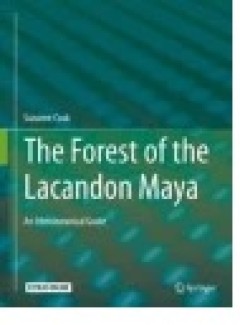
The Forest of the Lacandon Maya
In The Forest of the Lacandon Maya: An Ethnobotanical Guide, linguist Suzanne Cook presents a bilingual Lacandon-English ethnobotanical guide to more than 450 plants in a tripartite organization: a botanical inventory in which main entries are headed by Lacandon names followed by common English and botanical names, and which includes plant descriptions and uses; an ethnographic inventory, which…
- Edition
- -
- ISBN/ISSN
- 978-1-4614-9111-8
- Collation
- XXVII, 379
- Series Title
- -
- Call Number
- -

True Truffle (Tuber spp.) in the World Soil Ecology, Systematics and Biochem…
This book focuses on the taxonomic diversity of the genus Tuber as economically important truffles. In contributions by internationally respected scientists, it examines truffle systematics, interactions with abiotic and biotic environments, strategies for spore dispersal, and molecular processes in truffles. Topics discussed include: evolutionary theories and phylogeny of Tuber species from As…
- Edition
- -
- ISBN/ISSN
- 978-3-319-31436-5
- Collation
- 43 b/w illustrations, 28 illustrations in colour
- Series Title
- -
- Call Number
- -
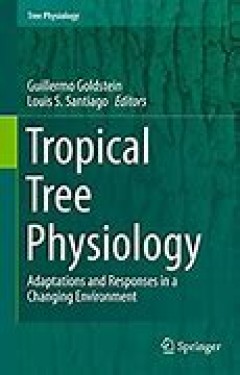
Tropical Tree Physiology Adaptations and Responses in a Changing Environment
This book presents the latest information on tropical tree physiology, making it a valuable research tool for a wide variety of researchers. It is also of general interest to ecologists (e.g. Ecological Society of America; > 3000 or 4000 members at annual meeting), physiologists (e.g. American Society of Plant Biologists; > 2,000 members at annual meeting), and tropical biologists (e.g. Associa…
- Edition
- -
- ISBN/ISSN
- 978-3-319-27422-5
- Collation
- 54 b/w illustrations, 72 illustrations in colour
- Series Title
- -
- Call Number
- -

Lycium Barbarum and Human Health
This book seeks to unravel the mysteries of wolfberry, and systematically introduces its mechanisms in preventing aging-associated diseases, such as cardiovascular diseases, inflammation, liver and neurodegenerative diseases. Wolfberry, the dried fruit of Lycium barbarum, is an anti-aging herbal medicine. There have been numerous reports investigating the underlying mechanisms of its anti-aging…
- Edition
- -
- ISBN/ISSN
- 978-94-017-9658-3
- Collation
- -
- Series Title
- -
- Call Number
- -
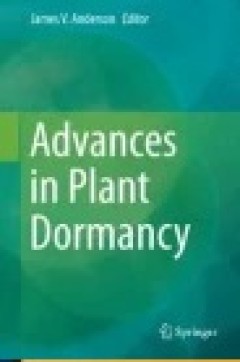
Advances in Plant Dormancy
Plant dormancy involves synchronization of environmental cues with developmental processes to ensure plant survival; however, negative impacts of plant dormancy include pre-harvest sprouting, non-uniform germination of crop and weed seeds, and fruit loss due to inappropriate bud break. Thus, our continued quest to disseminate information is important in moving our understanding of plant dormanc…
- Edition
- Ed. 1
- ISBN/ISSN
- 978-3-319-14451-1
- Collation
- XIV, 311
- Series Title
- -
- Call Number
- 581.5 ADV a
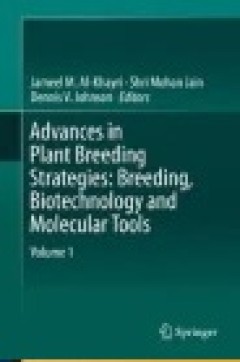
Advances in Plant Breeding Strategies: Breeding, Biotechnology and Molecular …
The basic concept of this book is to examine the use of innovative methods augmenting traditional plant breeding towards the development of new crop varieties under different environmental conditions to achieve sustainable food production. This book consists of two volumes: Volume 1 subtitled Breeding, Biotechnology and Molecular Tools and Volume 2 subtitled Agronomic, Abiotic and Biotic Stress…
- Edition
- Ed. 1
- ISBN/ISSN
- 978-3-319-22521-0
- Collation
- XII, 656
- Series Title
- -
- Call Number
- 630 ADV a
 Computer Science, Information & General Works
Computer Science, Information & General Works  Philosophy & Psychology
Philosophy & Psychology  Religion
Religion  Social Sciences
Social Sciences  Language
Language  Pure Science
Pure Science  Applied Sciences
Applied Sciences  Art & Recreation
Art & Recreation  Literature
Literature  History & Geography
History & Geography